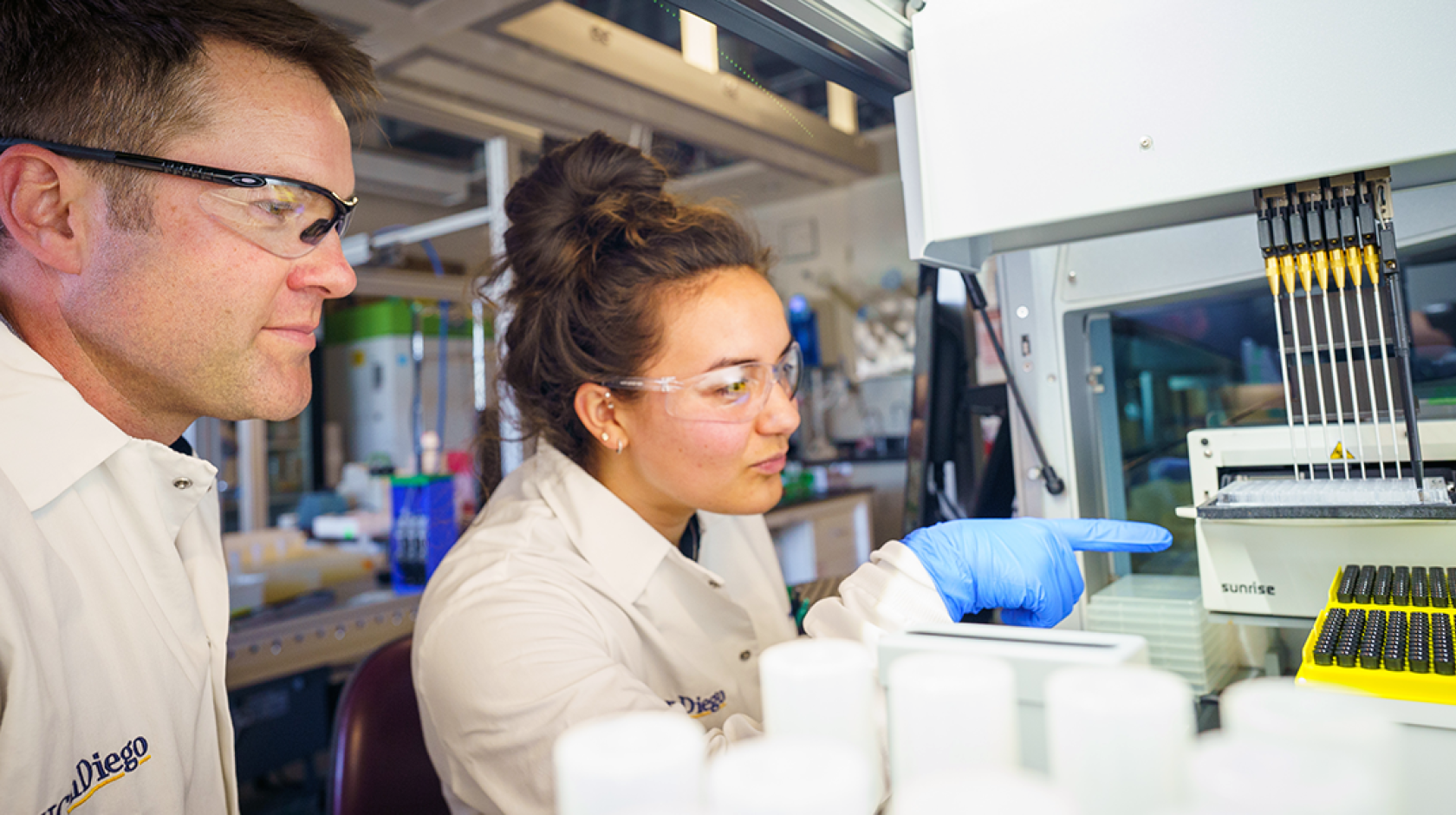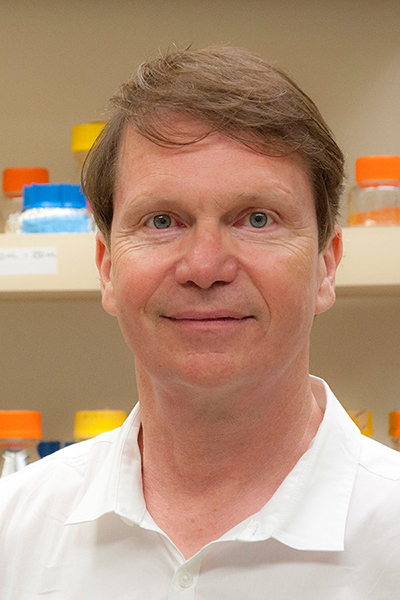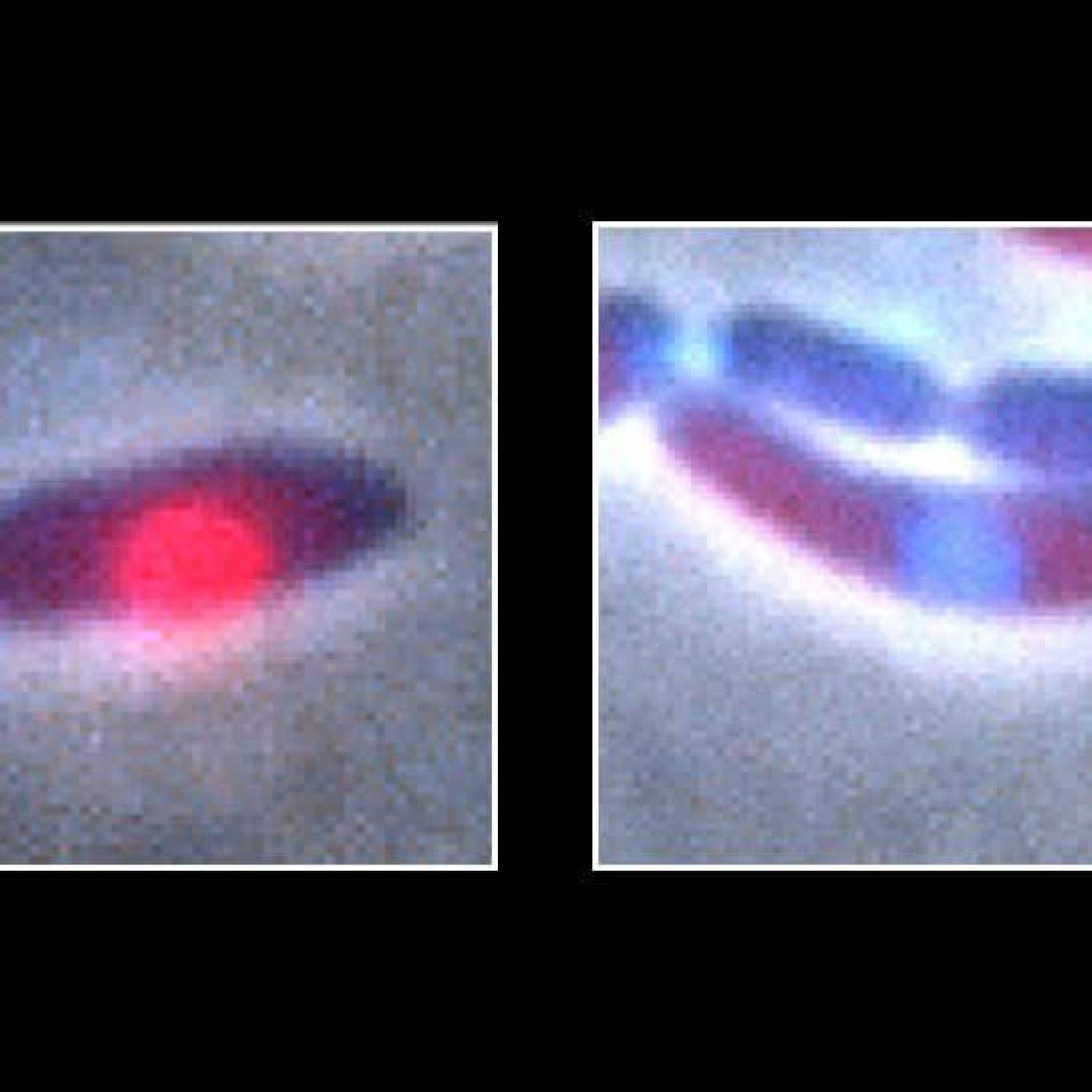Daniel Kane, UC San Diego

For the first time, large amounts of melatonin are being made by bacteria. In industrial sized fermentation vats, harmless strains of engineered E. coli bacteria are feeding on glucose and churning out melatonin, the hormone that controls circadian rhythms and serves as a sleep aid.
This large-scale production of pure melatonin by bacteria is one recent example of the expanding biomanufacturing industry. In biomanufacturing, genetically programmed microorganisms serve as biological factories that produce specific products. This mode of manufacturing is growing in the United States, and around the world, thanks in part to a series of fundamental advances made by bioengineers at the University of California San Diego Jacobs School of Engineering.
"The story really is that biomanufacturing is broadening in its range of applications into consumer products. Melatonin is finally out. It is being biomanufactured, and it's competing with organic synthesis," said UC San Diego bioengineering professor Bernhard Palsson.
In addition to its use as a sleep aid, melatonin is being considered for a much wider range of uses, including skincare, supplements for relaxation drinks, feed additives for aquaculture, and for a range of uses for plants in agriculture.
"The UC San Diego Jacobs School of Engineering is an enabler for modern biomanufacturing. With this melatonin project, we collaborated with colleagues in Denmark to develop and then scale up the biomanufacturing of a high-value product. To do it, we built on fundamental innovations made here in the bioengineering department at UC San Diego. I hope this project highlights the huge opportunities that are opening up in biomanufacturing. In many cases, what's missing is the final step, namely the scale up to commercially meaningful quantities. We need many more medium-sized pilot plants that allow researchers to scale up their biomanufacturing innovations to the point that they are ready to move into commercial production."
Palsson leads the Systems Biology Research Group in the Shu Chien-Gene Lay Department of Bioengineering at the UC San Diego Jacobs School of Engineering. While global innovation is nearly always a team sport, there are two big advances Palsson and his UC San Diego bioengineering research team have made that are now enabling modern biomanufacturing.
First, UC San Diego bioengineers led by Palsson leveraged computational biology in order to create new and better tools for designing metabolic production pathways to be inserted into the genomes of microorganisms. In other words, the team developed new computational tools for designing the metabolic instructions that tell microbes to perform specific tasks, such as making melatonin, while carrying out their normal cellular functions.
Second, UC San Diego bioengineers in Palsson's lab invented an automated adaptive laboratory evolution machine. With this robotic platform, the researchers let evolution do the work of generating optimized strains of programmed bacteria that are extremely efficient at doing whatever it is that they have been programmed to do, usually producing a metabolite. They do this based on the metabolic instructions that the researchers first designed on a computer and then inserted.
In the case of melatonin, the team's automated robotic machine leveraged the natural process of evolution in order to turn a strain of E. coli bacteria carrying inserted instructions to make melatonin into an E. coli strain that can only grow if it makes melatonin. This metabolic design is called a growth-coupled selection system. The lead engineer on this project is Adam Feist, a UC San Diego bioengineering research scientist and PhD alumnus from the bioengineering department. This adaptive laboratory evolution approach generated functional enzymes that enabled a team of synthetic biologists, led by Lei Yang PhD at the collaborating site at the Technical University of Denmark, to build the metabolic pathway that produces melatonin.
"You can manually perform evolution experiments in the lab. It's extremely laborious, can have variable outcomes, and it has low throughput – you can't do very many evolutions at the same time," said Feist. "Laboratory evolution has been around for a while, but automating it makes it a real engineering tool – quality control through algorithms which make the real-time decisions on how to best conduct the experiments, high-throughput capabilities to play out the evolutionary outcomes many times, and quantitative data collection in real time – things happen faster.”
Scaling up biomanufacturing
The output from the automated adaptive laboratory evolution machines are strains of bacteria that grow well in coffee-cup-sized beakers. Commercial biomanufacturing requires another step: scaling up production to thousands of liters.
"Scale up is the key to commercially implementing biomanufacturing," said Palsson. "The automated laboratory evolution machine we created at UC San Diego is critical for turning engineered strains of bacteria into strains that thrive in industrial-scale fermentation environments. But you still require a biofoundry, or a pilot plant, in order to figure out the process engineering – and train the future workforce – needed for successful scale up."
Making biomanufacturing processes work, for example, requires precisely controlling the environment the microbes live in. When you switch to large fermentation tanks, you have additional work to do, in order to make sure that what worked in a beaker will work in a large-scale environment.
In the case of melatonin, this scale-up was done in Denmark at a pilot plant at the Novo Nordisk Foundation Center for Biosustainability under the direction of Andreas Worberg Ph.D., where, until recently Palsson served as the Center’s CEO, in addition to his role at UC San Diego. Headquartered at the Technical University of Denmark, this research center is focused on developing real-world applications for the kinds of genome engineering advances Palsson's team, and others around the country and the world, have been making for years.
"Engineering schools in the United States need to develop scale-up approaches for biomanufacturing," said Palsson. In the 50s and 60s when antibiotics started to be mass produced by microorganisms through fermentation, there were fermentation plants in universities in the US. "These capacities need to be rebuilt. At the same time, that fermentation technology is 80 years old. We also need to develop fundamentally new technologies and engineering approaches for scale up and manufacturing," said Palsson.
Talking to colleagues in industry, Palsson said it's clear that scale up is going to be the bottleneck when it comes to whether or not the US emerges as the global leader in next-generation biomanufacturing. "People can do all kinds of genome editing now, and all kinds of imaginative synthetic biology. The automated laboratory evolution machine we created at UC San Diego is critical for this process of taking new engineered strains of bacteria and turning them into strains that thrive in industrial-scale fermentation environments. But getting the engineered strains to function efficiently at large scales is another hard step. You have to have a biofoundry or pilot plants to both help with the scale up and provide the educational training opportunities for the process engineers, the chemical engineers, the bioengineers, the systems engineers who are absolutely critical to the future success of biomanufacturing in the United States."
Palsson has been involved in the melatonin project from the start, first at the Novo Nordisk Foundation Center for Biosustainability and now as Board Member at Conarium Bioworks, a Maryland-based company, which licensed the relevant intellectual property from the Technical University of Denmark. Well-known as a sleep aid, melatonin is also being used in a growing list of applications in cosmetics, agriculture and wellness products.
"As far as we know, our melatonin is one of the first mainstream consumer products replacing a synthetic compound with a compound that will be fully produced through biomanufacturing," said Steen Nissen, the CEO of Conarium Bioworks, the company that has licensed the intellectual property for this manufacturing process from the Technical University of Denmark.
The vast majority of commercial-scale materials that are currently produced through biomanufacturing serve as intermediate products that get integrated into traditional manufacturing processes. One of the early pioneers of this kind of biomanufacturing is Genomatica, which is now a world leader in the biomanufacturing of wide range of chemical feedstocks. This San Diego based company was co-founded by UC San Diego bioengineering alumnus Christophe Schilling, along with Palsson, who was his PhD advisor. At the UC San Diego Jacobs School of Engineering, Palsson holds the Y.C. Fung Endowed Chair in Bioengineering.
Selected publications relevant to this story
Biomanufacturing of melatonin is now possible in Melatonin Research
Coupling S-adenosylmethionine–dependent methylation to growth: Design and uses in PLOS Biology
Microbial Synthesis of Human-Hormone Melatonin at Gram Scales in ACS Synthetic Biology
Leveraging UC San Diego's adaptive evolution technology platform
The automated platform which is the experimental driving force for the adaptive laboratory evolution work at UC San Diego is accessible to industry and non-profit organizations through a short term service model. There are opportunities to run high-throughput evolution and sequencing campaigns for selection and identification of desired traits in microorganisms. For details, contact Adam Feist: afeist@ucsd.edu
Keep up to date with the Palsson lab on Twitter: @ucsd_sbrg

Bernhard Palsson leads the Systems Biology Research Group in the Shu Chien-Gene Lay Department of Bioengineering at the UC San Diego Jacobs School of Engineering.

